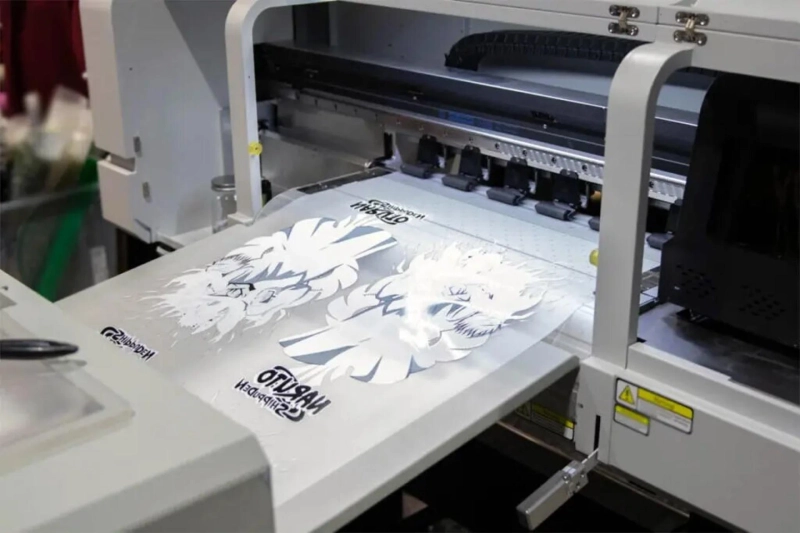In today’s competitive world of screen printing, the scenario is getting tougher each day due to mounting customer demands and expectations. This has made it difficult for businesses to thrive and stand out in the apparel printing industry. But calm, it’s difficult but not impossible, to thrive one should yield quality results and prioritize customer satisfaction. But how how to do so?
With the use of the Direct-to-Film Printing method one can deliver exceptional, high-quality results to its customers. The method has significantly impacted the way custom apparel is printed. So, let's deep into this article to explore what is direct to film printing and how does the methods work and contribute to yield productive results. Let’s start
-> What is DTF (Direct to Film Printing)?
Direct-to-film (DTF) is a heat transfer-based printing process that enables printers to get premium-quality and durable prints. Print technology assists printers in getting better results, such as vibrancy in colors, durability, and longevity. Here are some of the crucial elements that you need for direct transfer printing:
Computer and design software
Film printer
Heat press
Films and inks
Cutting equipment's
Workstation and tools
-> A Brief Analysis: How do you DTF Print?
The method is relatively straightforward and varies greatly with screen printing or traditional methods of printing. In DTF screen printing, the images are not created with an emulsion or stencil; instead, design software is used to make the image. Here is a brief explanation of the printing process:
-> Preparing the film and Powder Adhesive
The first step is design selection. Decide on the design you want to print. You can either create it yourself or use an existing one, but make sure it's compatible with your printer software. Next, put the ink cartridges into the printer and set up the DTF film. But make sure that the printer is appropriately scaled for printing.
Here are a few steps that you need to work there after;
Switch on your RIP (Raster Image Processor) software on your computer and import the colors, design, resolution, and print settings.
Confirm that the software is set up to work with your printer model.
Print the design onto the top layer of the white material using your printer.
-> Powdering:
Next, apply the hot melted powder to the film that has an image printed on it. But apply powder when the ink is wet and remember to remove the extra layering of the powder. You can either perform this task on your own by spreading ink on the paper or by using an automatic powder shaker.
-> Melting of Powder and Prepressing:
In this step, melt the spread powder inside the heat press after pressing the apparel. It is a vital part of the film printing process, as wrinkles would slow down the printing process. Apart from this, it ensures that the image is appropriately transferred from the film to the fabric.
-> Transfer of Design
It is one of the most crucial steps, and it should be done carefully as the Print is transferred to the fabric. Place your pretreated garment on the heat press and carefully transfer the DTF printing design position and the film to the apparel. You can use heat-resistant tape to fix the film in one place. Before putting the fabric in the heat press machine, ensure it adheres to the recommended time, temperature, and settings.
-> Peeling the Film
In the last step of direct-to-film printing, let your heated apparel cool down to room temperature and slowly peel the film from the fabric.
-> Post Pressing:
(Optional step) - To obtain the best results you should use this step. Heat presses the final fabric for 10-15 seconds to produce beautiful premium-quality prints.
-> Final Touches:
The finished products would be shipped to customers. So, remember to perform a final quality check on the finished products to ensure the design is appropriately printed on the apparel. Otherwise, your customers would be disappointed.
-> Final Words
To sum it up, direct-to-film is an impactful method for achieving premium quality prints in the apparel printing industry. By incorporating DTF screen printing, businesses can ensure more vibrant color accuracy and durability. In simple terms, the method empowers businesses to confront challenges and deliver exceptional results.
Go for DTF printing, a fantastic technique to print premium quality designs on your apparel.


